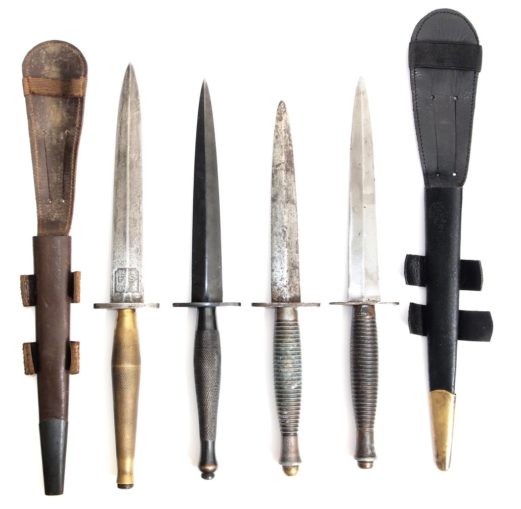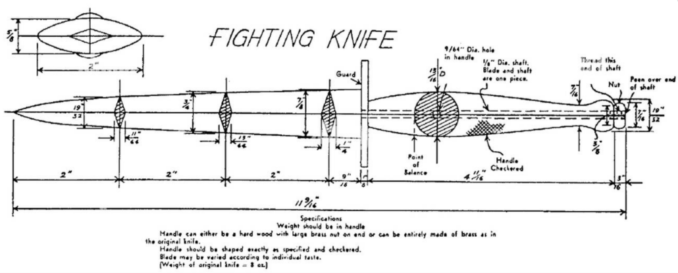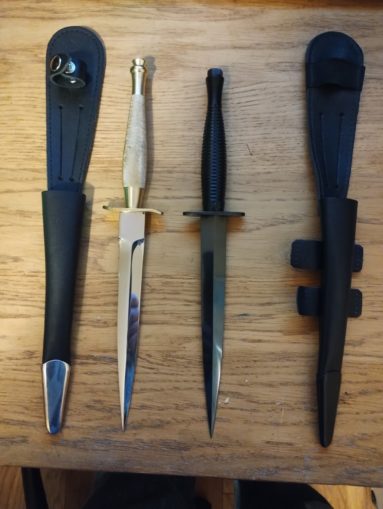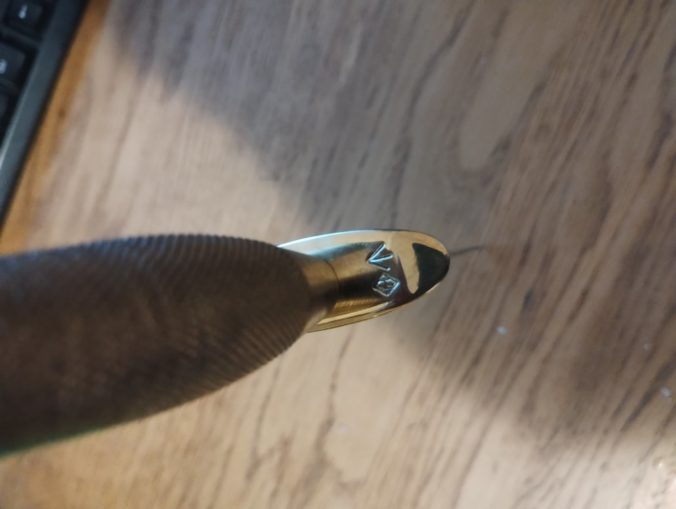
Xanthomelanoussprog, CC BY-SA 3.0, via Wikimedia Commons
The Fairbairn-Sykes fighting knife, often simply called the “F-S knife,” is one of the most iconic combat blades in history. Designed during World War II by two British close-combat experts, William Ewart Fairbairn and Eric Anthony Sykes, this double-edged dagger became synonymous with elite forces, particularly the British Commandos and Special Operations Executive (SOE). Its sleek design, lethal efficiency, and historical significance have cemented its legacy as a symbol of wartime ingenuity and martial prowess.
Origins and Design
The F-S knife was born out of necessity in the early 1940s, as Britain faced the escalating threats of Nazi Germany. Fairbairn and Sykes, both veterans of the Shanghai Municipal Police—where they honed their skills in hand-to-hand combat against armed criminals—drew on their extensive experience to create a weapon optimized for silent, close-quarters killing. Their goal was to equip British special forces with a lightweight, concealable blade that could penetrate heavy clothing and deliver fatal strikes with minimal effort.
The knife’s design is deceptively simple yet highly effective. Measuring about 11.5 inches (29 cm) in total length, it features a slender, 7-inch (18 cm) double-edged blade made of high-carbon steel, tapering to a needle-like point. The blade’s symmetrical, dagger-like shape allows for thrusting and slashing from multiple angles. Its distinctive handle, initially made of brass and later zinc or steel, is knurled for grip and topped with a rounded pommel, enabling it to double as a striking tool. The overall balance of the knife—weighted slightly toward the hilt—makes it agile in trained hands.

See page for author, Public domain, via Wikimedia Commons
Production and Evolution
The F-S knife was first produced by Wilkinson Sword, a renowned British blade manufacturer, in 1941. Early models, known as the “First Pattern,” featured an S-shaped crossguard and a more ornate handle, reflecting a degree of craftsmanship. As wartime demands grew, the design evolved into the simpler “Second Pattern” and “Third Pattern” versions, prioritizing mass production over aesthetics. The Third Pattern, with its straight crossguard and molded handle, became the most widely issued variant and remains the most recognizable today.
Combat Legacy
The Fairbairn-Sykes knife saw extensive use by British Commandos, the SOE, and other Allied special forces during World War II. It was particularly favoured for its role in silent eliminations—slipping through ribs or severing arteries with surgical precision. The knife accompanied troops in major operations, from the raids on Nazi-occupied Norway to the jungles of Burma. Its association with elite units lent it an almost mythical status, and it became a badge of honour for those who wielded it.
Beyond World War II, the F-S knife influenced modern military knives and remains in ceremonial use by some units, such as the British Royal Marines. Its design inspired countless imitations, though few match the original’s balance of form and function.
Cultural Impact
The Fairbairn-Sykes knife has transcended its wartime origins to become a cultural icon. It has appeared in films, books, and video games, often as the quintessential “commando dagger.” Collectors prize original examples, especially rare First Pattern knives, which can fetch thousands of dollars at auction. Its sleek silhouette is instantly recognizable, embodying the grit and determination of the soldiers who carried it.
The Fairbairn-Sykes fighting knife is more than a tool of war—it’s a testament to human ingenuity under pressure. Designed by two men who understood the brutal realities of combat, it equipped soldiers to face the darkest moments of the 20th century. Today, it stands as a relic of valour, a collector’s treasure, and a reminder of the skill and sacrifice that shaped its legacy. Whether displayed in a museum or studied by enthusiasts, the F-S knife remains a timeless blade forged in the fires of conflict.
My Knives
This is my collection of FS knives. The one on the left is the 1st pattern, the one on the right is the 3rd pattern. You can see the comparative elegance of the 1st as opposed to the utilitarian design of the 3rd.
The 1st pattern was issued with the belt sheath as shown, the 3rd pattern has the ankle sheath, but the tabs were often used to sew externally on a bergen/knapsack.
The missing 2nd pattern knife can be imagined by taking the handle of the 1st pattern and the blade/crossguard from the 3rd pattern.
Both the knives conform to the original dimensions/balance point exactly.

Although not a feature of military (government owned) equipment since the 1980’s, both the knives feature the all-important broadarrow.

© Dixie 2025



